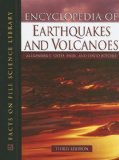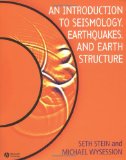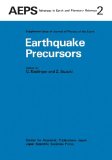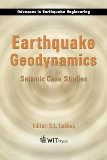Earthquakes
- 8th International Conference on Earthquake Resistant Engineering Structures. Chianciano Terme, Italy (7-9 September 2011)
- Caltech Seismological Laboratory
- Central Seismological Observatory of BGR
- Current Earthquake Information
- Earthquake Catalogues for Turkey

- Earthquake Definitions
- Earthquake Frequently-Asked-Questions
- Earthquake Hazards and Risks - Geology 204, Tulane University
- Earthquake Information
- Earthquake Maps
- Earthquake maps on the Web
- Earthquake Research Institues - (E.R.I.), University of Tokyo
- Earthquake Safety
- Earthquakes
- Earthquakes and Earth Structure
- European-Mediterranean Seismological Centre (EMSC-CSEM)
- Finding an Earthquake's Location with Modern Seismic Networks
- From induced seismicity to direct time-dependent seismic hazard

- Genoa University Seismic Network (DipTeRis)
- Hellenic Seismological Broadband Network (HL)
- Howstuffworks - How Earthquakes Work
- International Seismological Centre (ISC)
- Italian National Seismic Network (INGV)
- Kola Regional Seismological Center, Russian Academy of Sciences (KRSC)
- Locating Earthquakes (Triangulation)
- Matsushiro Seismological Observatory
- Mechanisms of Deep Earthquakes

- Mediterranean Very Broadband Seismographic Network (MedNet)
- Mercalli Intensity Scale
- Montenegro seismological observatory
- Northern Caucasus Regional Seismic Network (NCRSN)
- Observatoire Midi-Pyrenees Serveur de Données Sismiques (OMP)
- ORFEUS (Observatories and Research Facilities for European Seismology)
- Reading Sesimograms
- Republican Seismic Survey Center of Azerbaijan National Academy
- Reseau National de Surveillance Sismique (ReNaSS), Strasbourg, France
- SCEC Data Center
- Seismic Network of the Russian Academy of Sciences (GSRAS)
- Seismic Waves
- Seismic Waves, Seismographs, Seismograms, and Locating Earthquakes
- Seismicity and Earth’s Interior

- Seismographs / Seismometers
- Seismological Central Observatory (SZGRF), (Hannover, Germany)
- Seismological Data Center (GFZ) (Potsdam, Germany)
- Seismological Observatory
- Seismological Observatory of Hungary
- Seismological Survey of Serbia
- Seismology-Geology Glossary
- Studying Earthquakes
- Swiss Seismological Service
- The Paleoseismology Page
- What is Richter Magnitude
- World Data Center for Seismology (USGS)
Books about earthquakes






